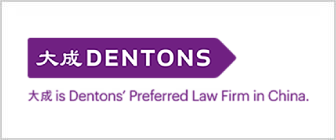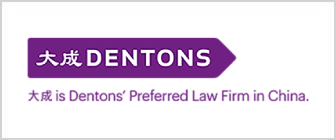Jet Deng and Ken Dai of Dacheng Law Offices review the merger control regime in China
1. Regulatory framework
1.1 What is the applicable legislation and who enforces it?
The Anti-Monopoly Law (AML) of August 1 2008 is the highest level law that applies to merger control. There is also a set of regulations and guidelines for merger control, including the Regulations on the Notification of Concentration of Undertakings and the Regulations on the Review of Concentration of Undertakings.
The Ministry of Commerce (MOFCOM) is the regulator in charge of merger control.
1.2 What types of mergers and joint ventures (JVs) are caught?
The AML only applies to transactions that qualify as a concentration of undertakings, which includes:
(i) Merger of undertakings;
(ii) Acquisition by an undertaking(s) of control over other undertakings through acquiring equity interests or assets; or,
(iii) Acquisition by an undertaking(s) of control or ability to exercise decisive influence over other undertakings through a contract or other means.
Joint ventures (whether full-function in nature or not) do qualify as a concentration of undertakings.
2. Filing
2.1 What are the thresholds for notification, how clear are they, and are there circumstances in which the authorities may investigate a merger falling outside such thresholds?
If either of the following thresholds is met (based on turnover in the previous financial year), a notification of concentration will be issued:
(i) The combined worldwide turnover of all undertakings to the concentration exceeds RMB 10 billion ($1.6 million), and the Chinese turnover of each of at least two undertakings exceeds RMB 400 million;
(ii) The combined Chinese turnover of all undertakings to the concentration exceeds RMB 2 billion, and the Chinese turnover of each of at least two undertakings exceeds RMB 400 million.
The thresholds described above are clear, but it is worth noting that in practice the turnover calculation in some cases can be complicated.
For a transaction falling outside the thresholds, MOFCOM still has the power to investigate if the transaction has or may have the effect of eliminating or restricting competition. To date, MOFCOM has not publicised any precedents as regards any such cases.
2.2 Are there circumstances in which a foreign-to-foreign merger may require notification, and is a local effect required to give the authority jurisdiction?
Foreign-to-foreign transactions require notification if they qualify as concentrations and meet the notification thresholds previously mentioned. There is no local effect test.
2.3 Is filing mandatory or voluntary and must closing be suspended pending clearance? Are there any sanctions for non-compliance, and are these applied in practice?
Merger filing is mandatory if the relevant thresholds are met, and closing must be suspended without clearance.
For non-compliance by undertakings that are obliged to file, MOFCOM may impose a fine of up to RMB 500,000. Additionally, if the transaction at issue has or may have the effect of eliminating or restricting competition, MOFCOM has the power to unwind the transaction.
MOFCOM has publicised five non-compliance cases, during the course of which seven undertakings were fined between RMB 150,000 and RMB 300,000 respectively.
2.4 Who is responsible for filing and what, if any filing fee applies? What are the filing requirements and how onerous are these?
In a merger of undertakings, all undertakings are obliged to file. For other types of concentrations, filing is required by any undertakings that will acquire control or the ability to exercise decisive influence over other undertakings.
There is no filing fee.
There are two types of merger filing procedure: the simplified procedure and the normal procedure. The simplified procedure requires only the provision of some basic corporate information and market data. The normal procedure is more onerous, requiring the provision of much more information, including business licences and certificates of the undertaking's affiliates incorporated in China, detailed market data and customer information. For both the simplified and normal procedure, there is also an additional e-filing requirement, which adds to the time and effort involved.
3. Clearance
3.1 What is the standard timetable for clearance and is there a fast-track process? Can the authority extend or delay this process?
After a filing is submitted to MOFCOM, it will take several weeks or even several months (depending on the complexity of the transaction) for MOFCOM to officially accept the filing as complete. MOFCOM has 30 calendar days to the review the notification in phase I, and 90 calendar days in phase II. The latter can be extended by 60 calendar days under some circumstances.
MOFCOM does not have the power to stop the clock or delay the process. In cases where a transaction is so complicated that the review cannot be finished within the statutory time frame, the filing may be withdrawn and the notification re-submitted to create more review time.
There is a fast-track or less complicated procedure for cases that qualify for the simplified procedure. Nowadays most notifications reviewed under the simplified procedure can be cleared within phase I.
3.2 What is the substantive test for clearance, and to what extent does the authority consider efficiencies arguments or non-competition factors such as industrial policy or the public interest in reaching its decisions?
A concentration will be prohibited if it has or may have the effect of eliminating or restricting competition. However, that concentration might still be approved if its pro-competitive effects obviously outweigh its anti-competitive effects, or if it is in line with the public interests. If this is the case, then MOFCOM will consider efficiencies arguments.
Industrial policy or other non-competition factors may influence the review process in some cases, as some industry regulators and other third parties may be consulted by MOFCOM during the review.
3.3 Are remedies available to alleviate competition concerns? Please comment on the authority's approach to acceptance and implementation of remedies.
Remedies (namely the imposition of restrictive conditions) are available to alleviate competition concerns raised by MOFCOM.
Once MOFCOM points out that it has concerns about competition, the transaction parties need to put forward a remedy proposal. MOFCOM will then negotiate with the transaction parties and consult with third parties to reach a final remedy proposal. MOFCOM normally requires a divestiture trustee and/or a monitoring trustee to assist in implementing the remedies.
4. Rights of appeal
4.1 Please describe the parties' ability to appeal merger control decisions – how successful have such challenges been?
Where the transaction parties are dissatisfied with a decision from MOFCOM, they may first apply for an administrative reconsideration. If the parties are dissatisfied with the reconsideration decision, they can bring an administrative suit before a court. To date there has been no such administrative reconsideration or suit.
5. Your jurisdiction
5.1 In no more than 200 words outline any merger control regulatory trends in your jurisdiction.
MOFCOM is in the process of amending its departmental regulations and guidelines for merger control. There will be more detailed rules soon, which will bring more transparency and predictability into its merger review process.
In addition to this, MOFCOM has recently undergone a reorganisation for the purpose of increasing the speed of review. This reform, along with the introduction of the simplified procedure, has contributed to a more efficient merger control regime.
At the same time, MOFCOM has also enhanced its enforcement against non-compliance or failure-to-notify transactions.
As a young merger control jurisdiction, by adhering to international best practices, MOFCOM is indeed making progress in respect of both maintaining the effective competition of the Chinese market and facilitating global transactions.
First published by our sister publication IFLR magazine. Take your free trial today.
Jet Deng
Dacheng Law Offices
Beijing
About the author
Jet Deng is a partner at Dacheng Law Offices working primarily in the field of antitrust and competition law. As an experienced antitrust lawyer, Deng has represented overseas and domestic clients before MOFCOM in dozens of merger control cases, including designing remedy proposals, and successfully guiding clients through the complex antitrust review process of the Chinese authorities. Deng is admitted to the Chinese bar, and is a member of the Antitrust Committee of the IBA, and the ABA Section of the Antitrust Law. In 2014, he was recognised by Chambers as a leading lawyer for antitrust practice in the Asia-Pacific. In March 2015, the NDRC recognised Deng in a letter of acknowledgement to the firm stating its appreciation of his expert advice and handling of an investigation.
Ken Dai
Dacheng Law Offices
Beijing
About the author
Ken Dai is a partner at Dacheng Law Offices specialising in antitrust investigations, antitrust compliance, merger filing and private antitrust litigation. He was one of the first lawyers to practice antitrust law in China. He has advised several multinational companies on establishing antitrust law manuals and compliance programmes. In addition, he has diverse experience advising both foreign companies and domestic enterprises in the filing of mergers before MOFCOM. Dai is a member of the Antitrust Committee of the IBA, the Competition Committee of the IPBA, and the Asian Competition Forum. Recently, Dai has been appointed vice chair of the Antitrust & Competition Committee of the Shanghai Bar Association. In addition, he is a columnist for Forbes China.



